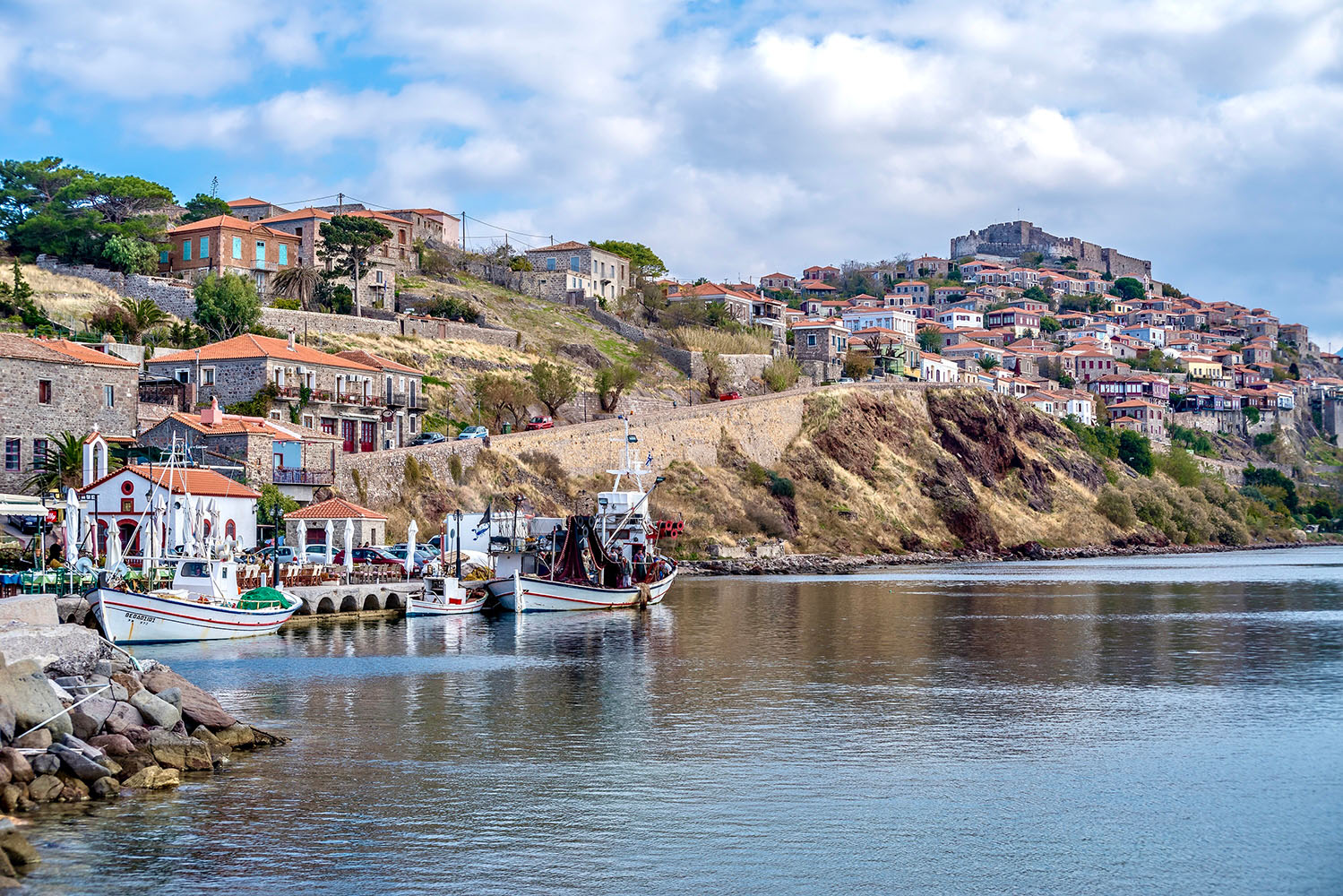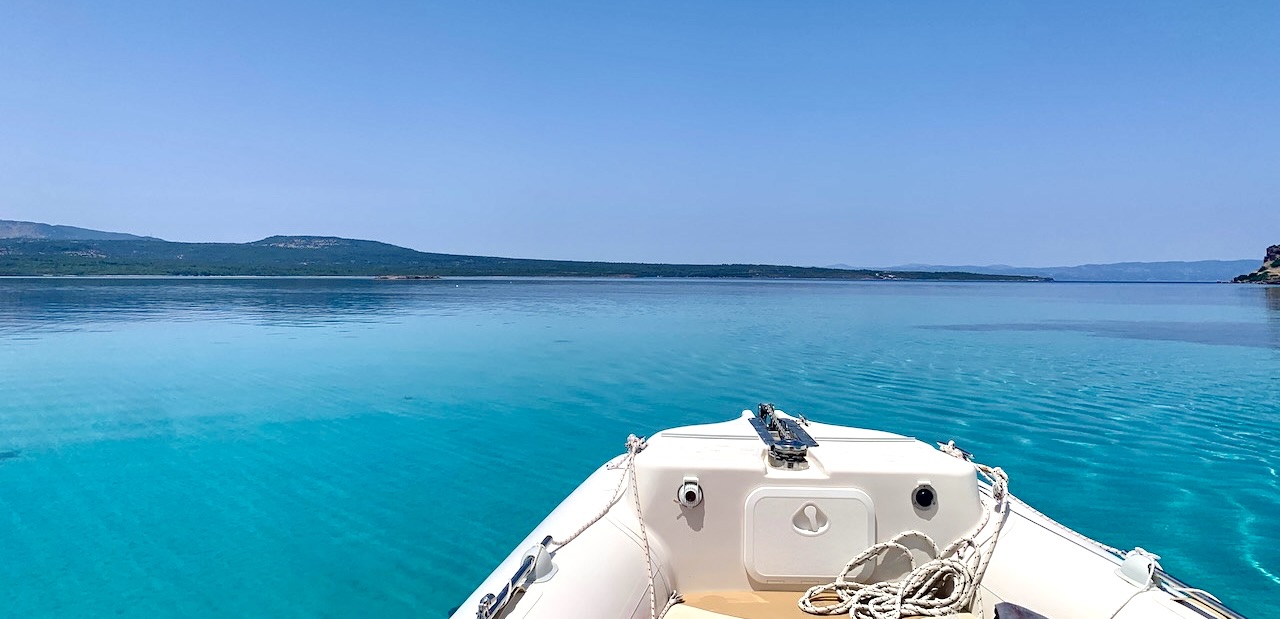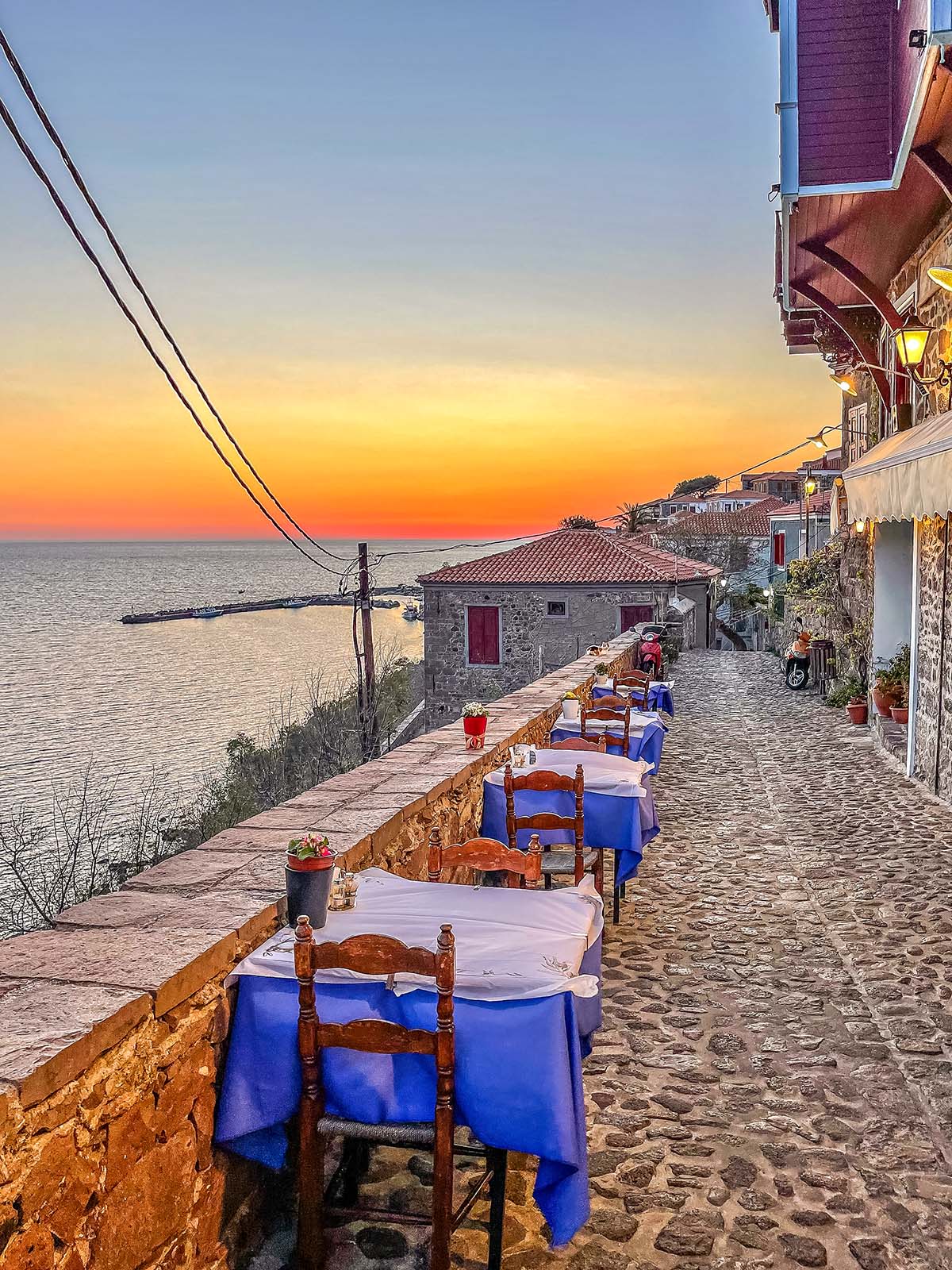The Ultimate Guide to the Greek North Aegean Islands
Greece has anything between 166 and 2227 inhabited Greek islands and when people refer to the Greek islands they often focus on the most well-known ones like Santorini and Mykonos. According to the Hellenic Military Geographical Service there are 29,372 islands in Greece.
Of course, it depends how you define an island, as the smallest of these is just 5.8 square km! Greece has so many islands as it has a very long coastline - with 15,000km of coastline it actually comes 9th in the world, surpassing larger countries like India and Argentina.
There are six chains of islands with many islands being situated in the Aegean Sea between Greece and Turkey.
- The Ionian islands are between Greece and Italy, with seven main islands and a few smaller ones and include Kefalonia
- The Saronic islands are a small cluster of islands close to Athens in the Saronic Gulf.
Within the Aegean sea, you have:
- The Cyclades, including Naxos and Syros;
- The Dodecanese, which means 12 islands in Greek but actually includes 15 large and 150 small islands, including Rhodes and Kos;
- The Sporades, 24 islands including Skaithos and Skopelos.
The two largest islands in Greece, Crete and Euboea also sit in the Aegean Sea.
But this blog is going to focus on the chain of islands referred to as The North Aegean Islands.
The North Aegean Islands
The main islands in the northeastern Aegean Sea and along the Turkish coast are the Greek islands of Lesvos, Samos, Ikaria, Chios, Lemnos, Agios Efstratios, Psara, Fournoi Korseon and Oinousses. Due to their location bridging East and West the islands of the Northern Aegean were vital for shipping and trade as early as 3000 BC.
In the 5th to 8th Century BC the islands were prosperous cultural and trade centres. During the Byzantine era, these islands were a province of the Roman Empire, like the rest of Greece. After 1453 AD and the fall of Constantinople, they were part of the Ottoman Empire and which led to a lot of destruction and persecution, as the Christian population declined dramatically.
The Turks weren’t keen to let go of the islands due to their location and the islands were heavily involved in the Revolution of 1821. It took until 1912 before the islands became part of the state of Greece.
This dramatic and varied history shapes the culture, food and architecture of the islands to this day, and perhaps it can be said to have led to the reputation of people of these islands being among the warmest and most welcoming in all of Greece!
Islands of Lesvos, Samos & Ikaria
Lesvos - often called Mytilene in Greece, after its capital, has an area of 1,633 km2 with 321 kilometres of coastline, making it the third largest island in Greece. Lesvos is often called the Emerald Isle as it is so green and verdant with pine forests and olive groves - there are 11 million olive trees growing here, that is equivalent to 122 per person of the population!
The whole of Lesvos is now classed as a Geopark due to the outstanding Petrified Forest, a national monument of trees turned to stone! The island is famous for its olive oil production and for being the centre for ouzo - that famous Greek spirit.
There are fascinating museums dedicated to the production of these which are worth visiting. Tourism was increasing in the late twentieth century but has decreased in recent years and so Lesvos is ideal for those wanting direct flights and a good tourist infrastructure whilst also having peace, space and an authentic Greek experience.
There’s an abundance of pretty villages, picturesque harbours and amazing beaches here, white sand, red, sand, shingle and rocky coves mean there’s something to appear to everyone. There are no high rise hotels and many villages have strict planning rules. Do make sure you visit Molyvos, Petra and Plomari!
Samos - this is the 8th largest Greek island and the birthplace of the mathematician Pythagoras (yes, of the theorem!). Samos is reliant on agriculture and tourism. It is a mountainous island with impressive archaeological sites including the famous ancient aqueduct.
It was construct by the ancient Greek mechanic Eupalinos, so it is called "Eupalinio Orygma" in Greek. It is a big tunnel which is 1,030 metres (3,379.3 ft) long. It was constructed to carry water to the town of ancient Samos. The island is also known for producing olives, grapes, figs and muscat wine. The capital of Vathy is worth visiting and the two main tourist hubs are Pythagorian and Kokkari. The beaches are mostly pebbly and surfers love the north side of the island due to the winds and big waves.
Ikaria - Ikaria owes its name to Icarus, the hero of Greek mythology who flew too close to the sun. It is a very green and verdant island, virtually untouched by tourism. It has a wonderful natural beauty but little tourist infrastructure. There are lovely beaches, hot springs, and the main port of Agios Kirikos is famous for its dark red wine. You can see the ruined Temple of Artemis and the town has a good archaeological museum. There are only domestic flights to the island from Athens, Lemnos and Thessaloniki.
Chios, Lemnos & Agios Efstratios
Chios - is the fifth largest Greek island and separated from Turkey by the Chios Strait. It is little known as a holiday destination and only has two international flights during the summer months. However, it has a lot to offer visitors in terms of beaches, pretty villages, harbours and a fascinating history. Chios is also one of the most affluent Greek islands, which is possibly why it hasn’t focussed on tourism up to now. It has a successful shipping industry, and agricultural sector, but the island is most famous for its production of Mastic Gum. It’s the sole producer of this highly prized product - the resin of the mastic tree bark. It has a unique flavour, is used in all sports of products from cosmetics to sweets and is said to have numerous health benefits. Chios is a fascinating and beautiful island which also includes a UNESCO heritage site at a monastery with great examples of Byzantine mosaics. There isn’t any mass tourism but the island has a cosmopolitan feel and a relaxed vibe which will appeal to many visitors.
Lemnos - ideal for a relaxing holiday, Lemnos has over 100 beaches and plenty to see and do. There’s a lot of history here - the ruined settlement at Ancient Poliochni is meant to be the oldest settlement in Europe dating from the 3rd millennium BC. The geography here is different with a large lake and sand dunes as well as pine forests and olive groves. Windsurfing and Kite-surfing are popular
Agios Efstratios - This small island lies off the coast of Lemnos (30km) and is about 1.5 hours away by ferry boat. It’s 80 km north west of Lesvos. It’s referred to as Ai Stratis by the locals. It was hit by a strong earthquake in 1968 which destroyed a lot of the older buildings on the island. It is a rocky island with little vegetation. The main village is very pretty and focussed around fishing. There are only 300 residents all year round but they are very welcoming to the few tourists who visit!
Psara, Fournoi Korseon & Oinousses
Psara - and its smaller sister Antipsara, has only 448 inhabitants. It lies north west of Chios and is just 43 square km in size. The island is dependent on fishing although tourism has slightly increased in recent times. Thousands of Greeks were massacred here in the Greek war of Independence in 1824. It is clear from the architecture on this remote island that it has a rich naval past. There are beautiful beaches and for most of the year it is a good place to find solitude and totally switch off from modern life.
Fournoi Korseon - a small quiet island ideal for relaxing or hiking. There’s no airport so ferries run 3x a week from Athens Piraeus port, and it’s an hour by boat from Samos and Ikaria. Psili Ammos, Kassidi and Petrokopio are probably the best beaches on the island and the main town of Fournoi has a lovely promenade where you can marvel at the amazing sunsets!
Oinousses - actually a cluster of 9 small islands close to Chios, there is a long maritime culture here and the name means ‘Shipowners island’. Of the less than 1000 inhabitants most work in seafaring or fishing. There's a good naval museum and the small harbour has a welcoming statue of a mermaid. It is a popular spot for yachts to stop when island hopping around this beautiful part of the Aegean! The ferry connects the island twice a week with Chios, Lesvos and Piraeus.













